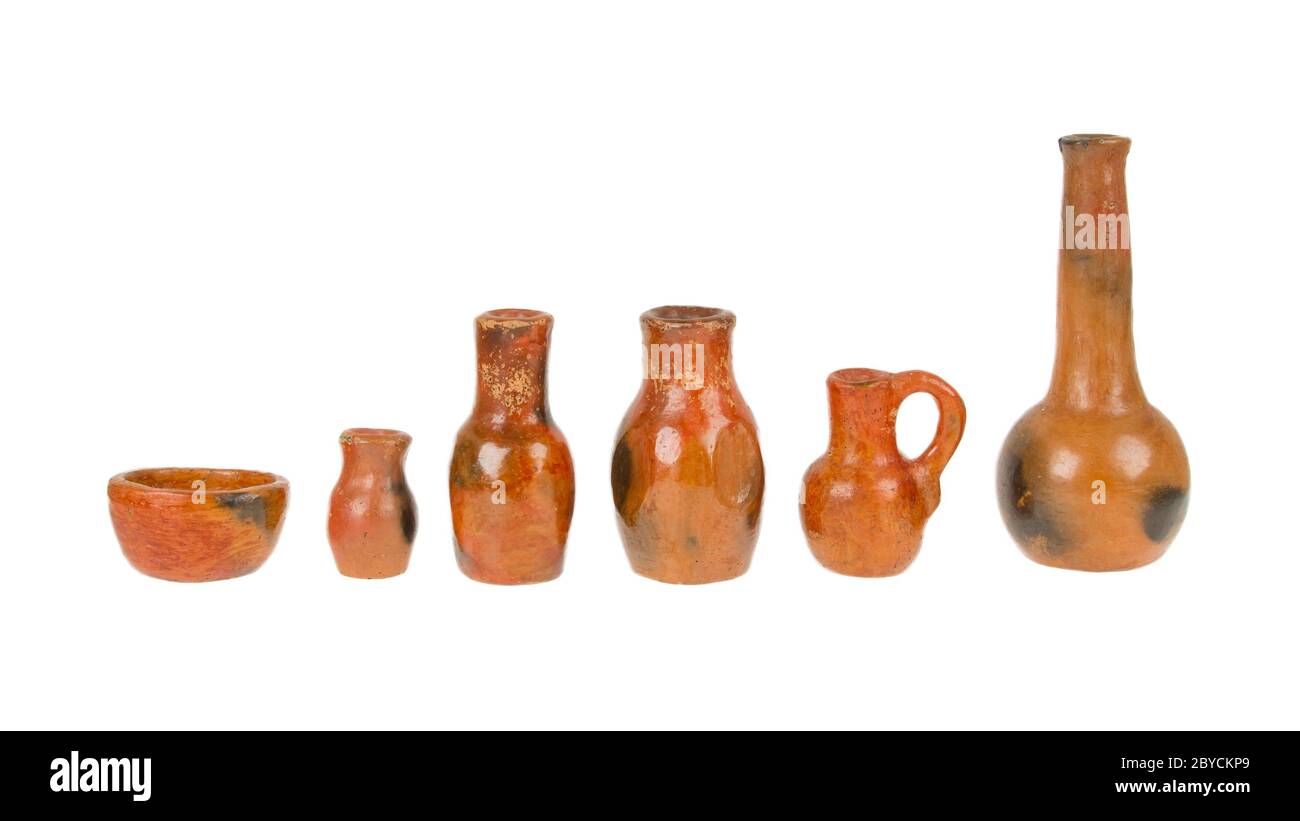Have you ever held a smooth, cool earthen bowl in your hands and felt a connection to something ancient and enduring? The humble earthen bowl, crafted from clay and fire, has been a constant in human history. It’s more than just a vessel for food; it embodies a tradition of artistry, sustainability, and a deep cultural connection with the earth itself.

Image: www.alamy.com
Earthen bowls are not merely relics of the past. They are experiencing a resurgence in popularity as people seek authentic, sustainable, and beautifully crafted alternatives to mass-produced goods. This article delves into the fascinating world of earthen bowls, exploring their history, the intricate process of their creation, their cultural significance, and their enduring place in modern kitchens and lives.
A History Etched in Clay
The story of earthen bowls is woven into the very fabric of human civilization. Archaeological evidence suggests that pottery making, the art of shaping clay into vessels, dates back to the Neolithic period, around 10,000 BC. Earthen bowls were among the first objects crafted by our ancestors, serving as essential tools for storing, cooking, and consuming food.
From the ancient civilizations of Mesopotamia and Egypt to the indigenous cultures across the globe, earthen bowls have been integral to daily life. These vessels were not just functional; they often held symbolic and religious meaning. Ancient civilizations used them in rituals, ceremonies, and as part of their burial practices.
The Journey From Clay to Bowl: An Artful Craft
The creation of an earthen bowl is a testament to the human ability to shape and transform nature. It begins with the humble clay, a material found abundantly in the earth. Clay, when mixed with water, becomes malleable, allowing artisans to shape it into any form they envision.
The process of making an earthen bowl is as diverse as the cultures that practice it. Though the fundamentals remain the same, the techniques used vary greatly. Some artisans use a potter’s wheel, a rotating platform that allows them to create perfectly symmetrical bowls. Others utilize hand-building techniques, shaping the clay with their hands, or using molds.
A Symphony of Styles: The Diversity of Earthen Bowls
The world of earthen bowls is a vibrant tapestry of styles and designs. Each region has its own distinct aesthetic and techniques passed down through generations.
For instance, the Japanese Raku ware is known for its bold and expressive glazes, while the Indian Blue Pottery flaunts its mesmerizing cobalt blue hues. The earthen bowls of Morocco, often adorned with intricate geometric patterns, are a testament to Islamic artistry.
Beyond the specific styles, the raw materials themselves contribute to the diversity of earthen bowls. The color of the clay can range from deep red to vibrant brown, while the glazes applied can create shimmering metallic effects or subtle, earthy tones.

Image: www.etsy.com
Beyond Aesthetics: The Functional Marvel of Earthen Bowls
While the aesthetic appeal of earthen bowls is undeniable, their functionality is equally impressive. They are incredibly versatile and adaptable to various culinary needs.
Earthen bowls are excellent for serving soups, stews, salads, and desserts. Their porous nature allows for even heat distribution, making them ideal for slow cooking and baking. Their natural cooling properties make them perfect for chilling salads and dips.
Sustainable Choices: Embracing the Earthen Bowl
In an era characterized by environmental concerns, earthen bowls stand out as a sustainable alternative to mass-produced ceramic and plastic alternatives.
The production of earthen bowls involves minimal energy consumption and leaves a smaller carbon footprint. They are biodegradable and can be safely composted at the end of their lifespan. Their durability ensures that they can be used for many years, minimizing the need for frequent replacements.
The Earthen Bowl in Modern Kitchens: A Culinary Renaissance
The earthen bowl is not limited to traditional settings. Modern chefs and home cooks are increasingly incorporating them into their culinary repertoire. The natural beauty of these bowls elevates the dining experience, adding a touch of rustic charm to any table setting.
The porous nature of earthen bowls also makes them ideal for marinating meats and vegetables, allowing the flavors to infuse deeper. Their ability to withstand temperature fluctuations makes them versatile for both hot and cold dishes.
Beyond the Kitchen: The Earthen Bowl as Art and Decor
Earthen bowls transcend their culinary purpose; they are also prized as decorative objects and artistic expressions. Their unique shapes, textures, and glazes lend themselves to artistic creations.
From serving as unique floral arrangements to acting as striking wall decor, earthen bowls bring a sense of natural beauty and handcrafted charm to living spaces. They are not just functional objects, but reflections of the creative spirit and artistry woven into their creation.
Earthen Bowl
The Legacy Continues: A Call to Embrace the Earthen Bowl
The earthen bowl, a testament to human ingenuity and craftsmanship, has endured the passage of time. It reminds us of our connection to the earth, the power of natural materials, and the enduring value of handmade objects.
Whether it is a cherished heirloom passed down through generations or a newly acquired piece from a local artisan, the earthen bowl deserves a place in your home. It’s not just a vessel for food; it’s a reminder of the beauty and artistry that exist in the simplest things, and a celebration of the enduring human spirit that continues to craft and create.
Embrace the beauty and functionality of earthen bowls. Discover the joy of handmade beauty and support artisans preserving this ancient craft. Join the culinary renaissance and elevate your dining experience with the natural charm of earthenware. Explore the diverse world of earthen bowls, and discover the stories woven into their clay.






